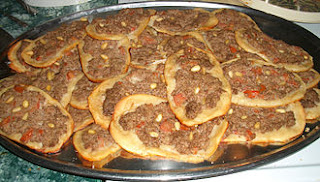Hummus
This globally famous, beige-hued spread is customarily made with squashed chickpeas, tahini sesame glue, lemon juice, and garlic. Individuals across the world love hummus for its tart flavor and the way that it is loaded up with supplements.
When served, it is regularly dressed with a sprinkle of olive oil, and is then utilized as a plunge for vegetables or a delightful filling for flatbreads like pita. Indeed, even today, not much is been aware of its beginnings, albeit the earliest notice of hummus traces all the way back to thirteenth century Egypt.
Hummus is some of the time furthermore enhanced with flavors like cumin and paprika, and it tends to be decorated with anything from new spices, cucumbers, and hacked tomatoes to olives, pine nuts, and hard-bubbled eggs.

.jpg)











